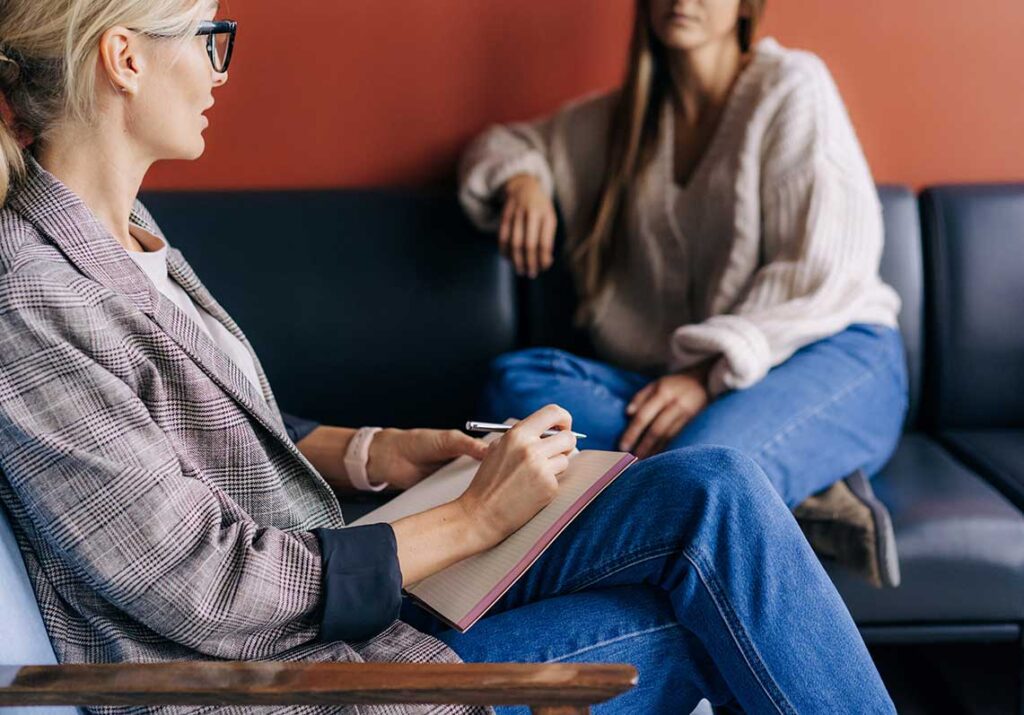An increasing number of Americans are choosing to sit with psilocybin, and many are microdosing. In fact, surveys suggest that psilocybin microdosing has risen 12.5x in the last decade, with search engine queries for psilocybin outranking LSD since 2019. (1)
As a psychedelic practitioner, you need to stay on top of this trend. If clients are doing it, you should make an effort to learn about it, covering the benefits, the ideal way to prepare and sit, and the potential risks.
Microdosing Psilocybin—Understanding Sub-Perceptual Dosing
Microdosing is the practice of taking very small doses of a psychedelic substance to produce desirable effects that lack the potency of standard doses. Also known as “sub-perceptual” doses, they don’t impact cognition as much as higher doses. In most cases, they can be taken while performing regular daily activities (caution is still advised, though, as the effects may be stronger than expected).
What is a Sub-Perceptual Dose?
According to Mastering Microdosing, an average microdose of psilocybin mushrooms typically falls between 200 to 500 milligrams (0.2 to 0.5 grams) of dried Psilocybe cubensis mushrooms. The goal of a microdose is to create a barely noticeable shift in perception—enough to promote benefits such as increased energy, emotional clarity, or enhanced focus—while avoiding the more dramatic effects associated with higher doses.
This shift should not impair daily functioning, but it is also not entirely imperceptible. A well-calibrated microdose produces what Paul F. Austin describes as a “slight but noticeable lift” rather than an overt psychedelic experience. (3)
You can find a comprehensive introduction to integrating microdosing into your practice safely, effectively, and intentionally with our Step-by-Step Introduction to Microdosing for Practitioners.
Recommended Frequency for Microdosing
Although the effects of a microdose are minor, the benefits can last for a couple of days. To account for this, many will microdose on alternate days or every few days, giving them plenty of time to reap the benefits of each dose. (4)
What are the Benefits of Microdosing Psilocybin?
It’s claimed that microdosing can help to improve mood, boost creativity, lower stress levels, and more. But if the dose is sub-perceptual, how many benefits can it actually provide and is there a placebo effect at play?
Thankfully, there have been many studies on the effects of microdosing, not to mention countless anecdotal reports. Here’s what the science has to say about the benefits of microdosing psilocybin:
Improved Mood and Stability
A 2022 study on 953 microdosers found notable improvements in mental health and mood when compared to a placebo group. These results were consistent across all demographics. It also noted that while combining psilocybin with lion’s mane and vitamin B3 (niacin) didn’t further impact mood and mental health, it did lead to psychomotor improvements in older participants. (5)
Lower Stress
Improvements in mood and mental health could lead to reduced stress. Microdosers generally report lower levels of stress and anxiety. Animal studies on microdoses suggest that people who regularly sit with psychedelics may also be more resilient to stress and more adaptable in general, with fewer compulsive actions. (6) (7)
Can Microdosing Improve Creativity?
Some microdosers turn to psilocybin to boost their creativity, but while there are many anecdotal reports suggesting a link between microdosing and creativity, researchers aren’t convinced.
A 2022 double-blind, placebo-controlled study found that microdoses of psilocybin didn’t produce objective improvements in creativity. It did note, however, that many users “felt” more creative and happier, and there were changes in brain waves (measured using an EEG). Creativity is also hard to quantify and could be impacted by mood—if you feel happier, you may be less likely to procrastinate and more willing to put your natural creativity to good use. (8)
Does “Set and Setting” Apply to Microdosing?
Psychedelics have been described as “nonspecific amplifiers of the unconscious”. They’re not a magic pill, and the effects are largely dependent on the user’s mindset and environment, as well as the way they integrate their experiences into their life. (9)
The perfect set (mindset) and setting (environment) may not be as much of a dealbreaker as with large doses, but it’s still an important consideration.
Regardless of the dose, a practitioner should adequately prepare their client before a psychedelic experience and help them to integrate their learnings afterward:
- Intention-setting: Work with your client to define clear, realistic goals for their protocol. Whether they’re aiming to improve focus, manage stress, or enhance creativity, helping them set specific intentions will provide direction and purpose.
- Expectations: Clients may come in hoping for dramatic shifts after one or two doses. Realign them to see microdosing as a slow-building process, and help them become aware of the subtle changes that can accumulate over time with consistency.
- Reflection practices: Encourage journaling, mood tracking, or voice memos to help clients record daily experiences and insights. This makes it easier to notice patterns and connect small shifts to larger goals.
- Supportive practices: Gentle activities like meditation, breathwork, or mindful movement can help calm the nervous system and increase receptivity to the benefits of microdosing.
- Integration: Create space for regular check-ins and discussions. Helping clients process their experiences and connect them to everyday life is where much of the real growth happens.
Microdosing isn’t a shortcut, but with the right preparation and support, it can be a powerful catalyst for change.
Risks and Side Effects: Preparing a Client for Their Microdosing Journey
Psilocybin is generally very well tolerated, and while there are some adverse effects, the risk drops significantly for microdoses.
Some things to consider include:
- Headaches: Some members of our community have reported suffering from headaches hours after taking a microdose of psilocybin. There is an interesting thread on the subject here where members recommend staying hydrated and looking out for added ingredients in psilocybin capsules.
- Legality: The US has steadily been embracing psychedelics over the last five years or so, but they are still illegal to sell, buy, and possess in most states, with the exception of Oregon and Colorado. Practitioners should advise their clients regarding the legality and safe use of substances like psilocybin, even with microdosing. See our guide to the legality of psilocybin to learn more.
- Sleep Disturbances: Studies suggest that microdosing psilocybin may lead to mild sleep interruptions, with one study finding a reduction in REM sleep onset latency and decreased REM sleep duration on the day of administration. The effects may be more noticeable in individuals with existing sleep issues. (10)
- Mental Illness: The National Center for Complementary and Integrative Health (NIH) warns that psilocybin is “not safe” for people with schizophrenia, borderline personality disorder (BPD), and severe forms of bipolar disorder. However, it’s worth noting that psilocybin-assisted therapy has also been listed as a possible treatment option for individuals with BPD. Still, caution is advised in clients presenting with a complicated mental health history. (11) (12)
Conclusion: What Practitioners Need to Know About Microdosing
Microdosing has seemingly become the preferred way of experiencing psilocybin, with many people seeking milder experiences that can positively impact mood, stress levels, anxiety, and creativity. But it’s still a largely illegal substance, and while the risks are greatly reduced, it’s no less important to practice proper screening and preparation, ensure a client is ready for their experience, and work closely with them to integrate everything they have learned.
You can learn more in our free guide to microdosing, which covers psilocybin and various other psychedelics.





